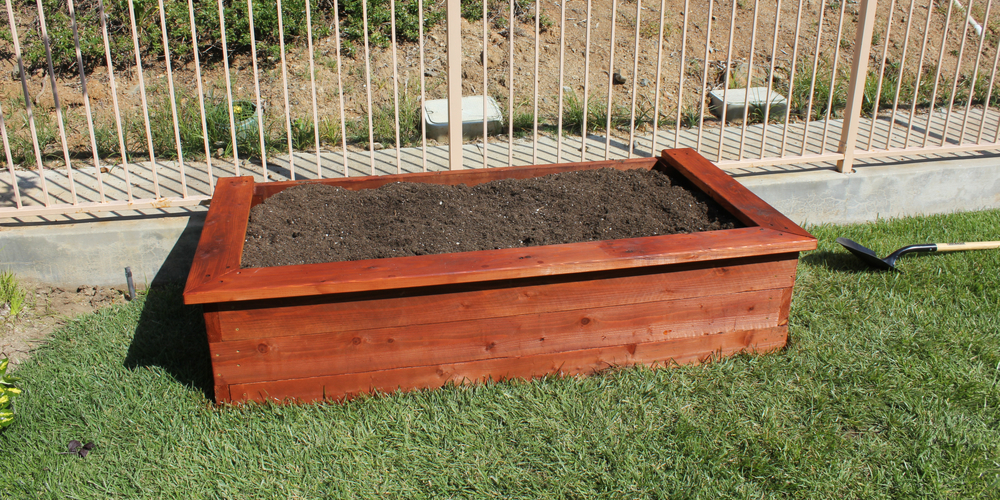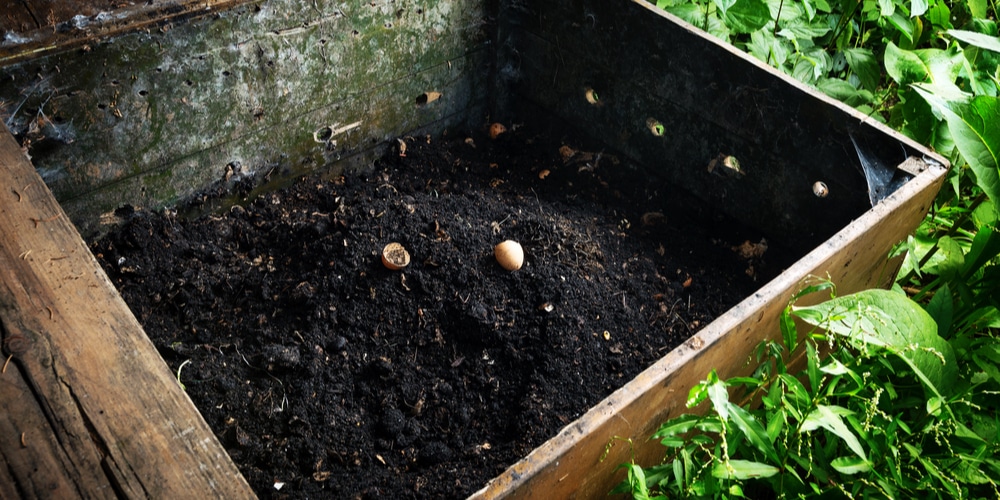Planning Your Raised Bed Garden
Embarking on the creation of raised beds for your Illinois vegetable garden involves a strategic approach to ensure thriving plants and ease of access throughout the growing season.
Choosing the Right Location
When selecting a location for your raised beds, prioritize a spot that receives six to eight hours of sunlight daily, essential for the growth of most vegetables.
Additionally, consider proximity to a water source and protection from strong winds.
For Illinois, south or west-facing locations often provide the best sun exposure.
Determining the Best Size and Shape
Your beds should not exceed 4 feet in width to allow for easy access to the center from both sides.
The length can be as long as your space allows, though 8-foot lengths reduce the need for excessive cutting if using standard lumber.
A good depth for a raised bed is 12 to 24 inches, with deeper beds accommodating root vegetables better. Here’s a quick reference:
| Vegetable Type | Minimum Soil Depth |
|---|---|
| Leafy Greens | 6 inches |
| Bush Vegetables | 12 inches |
| Root Vegetables | 18–24 inches |
| Tall Vegetables | 24+ inches |
Selecting Wood and Materials
Choose untreated, rot-resistant wood such as cedar or redwood to ensure the longevity of your garden beds without introducing chemicals to the soil.
Alternatively, recycled composite materials offer a sustainable choice.
Avoid using railroad ties or treated lumber, as the chemicals they contain could leach into your soil.
The thickness of the lumber should be at least 2 inches for durability.
Using galvanized screws instead of nails will provide additional strength and longevity to your structure.
Soil and Composting
To ensure your vegetable garden thrives, the right mix of soil and the incorporation of compost are crucial components. They provide the foundation for strong plant growth and fruitful yields.
Creating a Healthy Soil Mix
To create the ideal soil mix for your raised beds, aim for a balance that supports moisture retention while providing good drainage.
- Begin with topsoil, the nutrient-rich layer that will serve as the primary medium for your plants.
- Integrate a compost, such as decomposed organic matter, to enhance the soil’s fertility. Compost improves soil structure, which promotes root growth.
- Consider adding peat moss or coconut coir to improve moisture retention.
- Incorporate vermiculite or perlite in small quantities to aid aeration and drainage.
For a standard raised bed measuring 6 feet in length, 3 feet in width, and with 12-inch-high sides:
- Total Volume:
6' x 3' x 1' = 18 cubic feet - Soil Mix Ratio (For example):
- Topsoil: 60%
- Compost: 30%
- Aeration Additives: 10%
Adjust these ratios to suit the specific needs of your garden’s plants.
Composting Basics for Nutrient-Rich Soil
Composting is the process of recycling organic material into rich soil amendment, a key ingredient for a successful raised bed.
- Materials: Use a mixture of brown (carbon-rich) and green (nitrogen-rich) materials.
- Brown: Dried leaves, branches, and paper.
- Green: Vegetable scraps, fruit waste, and lawn clippings.
Begin your compost pile by alternating layers of green and brown materials.
Aim for a ratio of about 2:1 of browns to greens, but don’t worry about being perfect; composting is forgiving.
- Regularly turn your compost pile to speed up the decomposition process and ensure an even breakdown of materials.
- Compost is ready when it’s dark, crumbly, and has an earthy smell.
When applying compost to your raised beds, layer 2-4 inches on top of your beds each season to increase nutrient levels and improve overall soil health.
If you’re setting up a new raised bed, you can fill it solely with compost, but it’s typically more beneficial to mix it with other soil amendments to provide a balanced environment for your garden.
Construction and Assembly
In building raised beds for your Illinois vegetable garden, the focus is on constructing a durable frame and ensuring proper site preparation and drainage.
Building the Raised Bed Frame
To begin, select weather-resistant materials such as untreated cedar, which resists decay.
Your raised bed frame can be any size, but a common dimension is 4 feet by 8 feet. This size allows for easy access to the center from both sides without the need to step into the bed. Here is a simple guide to the construction:
- Cut your lumber to the desired lengths, typically:
- Four 4-foot lengths for the ends
- Four 8-foot lengths for the sides
- Four posts (4x4s) cut to the height you wish your bed to be, plus additional length for anchoring into the ground
- Assemble the frame by attaching the side boards to the posts using exterior-grade screws. Ensure each corner is squared.
- Reinforce corners with angle brackets or cross bracing if needed for additional stability.
Preparing the Site and Setting Up Drainage
Proper site preparation can lead to a successful gardening season. Ensure your bed is placed in an area with adequate sunlight and level ground. Follow these steps:
- Remove sod and weeds from the designated area.This can be done by using a sod cutter or by smothering the grass with cardboard and layering soil on top.
- Level the ground where your bed will sit to prevent water pooling on one side of the bed.
- Improve drainage by loosening the soil beneath the bed with a fork or shovel.If necessary, add a layer of gravel before filling your bed with a quality topsoil mixed with compost.
Planting Strategies
To ensure success with your raised vegetable beds in Illinois, you’ll want to pay close attention to crop selection and planting techniques tailored to the Illinois climate and seasonal conditions.
Crop Selection for Illinois Climate
When picking vegetables for your Illinois garden, focus on those that thrive in the state’s varied weather conditions. For example:
Cool Season Crops:
- Lettuce
- Spinach
- Radishes
- Peas
Warm Season Crops:
Plant these crops at the right time to match their preferred growing temperatures for optimal growth.
Timing and Planting Techniques
Your timing should maximize the growing season:
- Plant cool-season crops in early spring or late summer, as they can withstand cooler temperatures.
- Warm-season crops should be planted after the last frost when the soil has warmed.
Employ these planting techniques for raised beds:
- Soil Preparation: Ensure the soil is loose and well-aerated up to 20 inches deep.
- Spacing: Follow specific spacing recommendations for each vegetable, using closer spacing since raised beds don’t require walkways. For lettuce, use 6-inch intervals.
- Watering: Install a nearby water source to keep the soil consistently moist.
- Succession Planting: Replant at intervals to have a continuous harvest throughout the season.
Maintenance and Care
Maintaining your raised vegetable garden beds in Illinois requires attention to watering systems, pest management, and seasonal tasks. Effective care ensures longevity and productivity of your garden.
Watering Systems and Techniques
For your raised beds, implement a drip irrigation system to deliver water directly to the roots and minimize evaporation.
Schedule watering in the early morning to reduce fungal diseases and water waste.
Managing Pests and Diseases
Regularly inspect your plants for signs of pests and diseases.
Use physical barriers, such as garden fabric, to deter insects and animals.
Apply organic pesticides sparingly to address infestations and prevent resistance buildup.
Seasonal Maintenance Tasks
- Spring: Prepare your raised beds by adding compost to replenish nutrients.
- Summer: Mulch to retain moisture and suppress weeds.
- Fall: Remove spent plants and add a layer of mulch to protect the soil.
- Winter: Inspect structures for damage and plan any necessary repairs for the coming growing season.
Frequently Asked Questions
In this section, you’ll find practical answers to some common queries about building and maintaining raised beds for your vegetable garden in Illinois.
What materials are recommended for lining the bottom of a raised garden bed?
For lining the bottom of a raised garden bed, landscape fabric or hardware cloth can be used.
These materials discourage weeds and burrowing pests while allowing drainage.
What is the ideal depth for a raised bed when planting vegetables?
The ideal depth for a raised vegetable garden bed is between 12 and 18 inches.
This depth supports most vegetable root systems and allows for proper soil amendment.
What steps are involved in preparing soil for a raised vegetable garden bed?
To prepare soil for your raised vegetable garden, start by loosening the existing soil beneath your raised bed.
Then, mix in compost or aged manure to enrich the soil.
Finally, add a mixture of topsoil and more compost to fill the bed up to its desired depth.
Which type of wood is most durable and safe for constructing raised vegetable beds?
Untreated cedar is a durable and safe option for constructing raised vegetable beds as it is naturally rot-resistant and does not leach harmful chemicals into the soil.
Are there specific soil amendments best suited for raised vegetable gardens?
For raised vegetable gardens, incorporate well-composted organic matter, bone meal, and kelp to improve soil fertility and structure.
These amendments encourage strong plant growth.
What considerations should be made for drainage in raised vegetable garden beds?
Ensure your raised garden beds have adequate drainage by situating them on a slight slope or incorporating drainage materials such as gravel at the bottom.
Maintain a loose soil structure to prevent waterlogging.
Last update on 2025-06-06 / Affiliate links / Images from Amazon Product Advertising API




